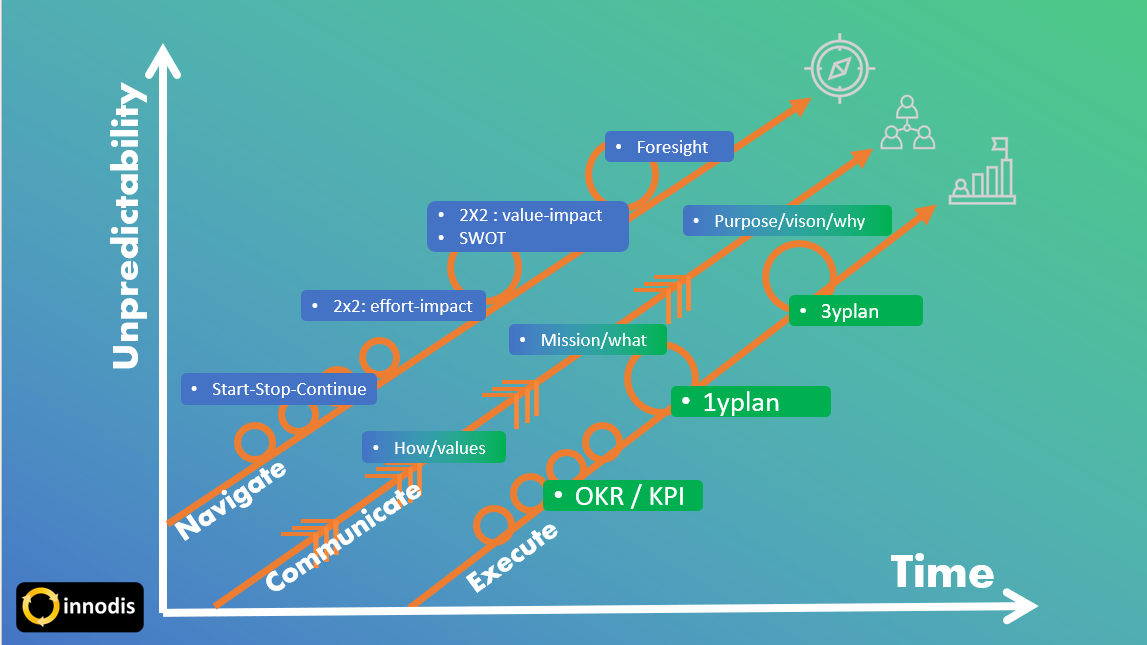💡 Navigate: The initial phase of the strategy involves using straightforward frameworks to steer through complexity. Avoid lengthy strategic planning projects and focus on regular review and manageable tasks. Tools such as '2x2: value-impact', '2x2: effort-impact', and 'Start-Stop-Continue' are recommended for easy navigation. A foresight exercise can be interesting to provide a more holistic view (https://lnkd.in/eXayt9BW) .
📣 📣 Communicate: Translate the strategic direction into a simplified framework, ensuring that it is not only used but also continuously communicated across the organization. The emphasis is on the importance of maintaining alignment through ongoing dialogue. Elements like 'Mission/what', 'How/values', and organizational charts are highlighted. Often this is neglected and too often it is assumed to be known; the reality is different, unfortunately.
🛠 🛠 🛠 Execute: is the critical phase,. Turn the multi-year strategic outlook into a tangible one-year action plan, with ongoing follow-up. Performance is monitored using 'OKRs/KPIs' to measure success and make necessary adjustments.
Adaptability and constant communication in strategy execution are key, with the goal of achieving alignment and effective action. Strategic planning is a dynamic process requiring regular reassessment and agile responses to the ever-changing business landscape.